FORT HOOD, Texas - Chemical Soldiers from the 1st Calvary Division's 2nd Chemical Battalion performed team pre-deployment training on toxic industrial chemical protection and detection equipment, known as TICPDE, and hazardous material identification on Nov. 18, at Fort Hood Army Airfield.
For the 30 Soldiers involved, the training and familiarization with the equipment became extremely important due to a high volume of chlorine and other toxic industrial chemicals, or TIC, detected in Iraq during the division's last deployment. Following that deployment, the Department of the Army approved a directive to develop and provide specialized equipment and training in order to safely mitigate the hazards of dealing with TIC.
Columbus, Miss. native, Staff Sgt. Theresa Stepp, a chemical operations specialist with the Divisions Special Troop Battalion, 1st Cavalry Division, explained that this training consists of various steps to include a cross check, hands on process called the 'buddy system.' This system is necessary to successfully prevent any possible chemicals from seeping into their self containing breathing apparatus protected gear.
"It can take up to 3 to 4 minutes for the system breathing apparatus to be fully ready, prior to any mission," said Stepp.
This makes the buddy system both a time and life saver for all troops under chemical response operations. She described the equipment as more user friendly during operations with an extensive range of detection capabilities. Another key change is making the equipment lighter, approximately 6 to 22 pounds; just a couple of pounds lighter than the previous equipment used in theater.
Soldiers were divided into groups where they donned two different suits to include level A, a neon yellow, fully encapsulated suit used for chemical reconnaissance, and level B, a beige cover all suit used for decontamination.
"It's always good training with any type of equipment before our next deployment," said Sgt. Dwayne Bautista, a Soldier with Special Troops Battalion, 2nd Brigade Combat Team, 1st Cavalry Division.
"I prefer the level B suit because it's more comfortable and it breaths for you versus the Joint Service Light Integrated Suit Technology (known as JSLIST), I used while training with the 602nd Aviation in Korea," said Spc. Elizabeth Game, currently with 181st Chemical Company, 2nd Chemical Battalion, at Fort Hood.
"The JSLIST was made of plastic and had a charcoal lining which was used like a filter making it much more uncomfortable to be in and harder to breathe. The level B suit breaths for you and it comes with an air tank," she added.
In addition to suiting up in Level A suits, several soldiers conducted a situational training exercise to include chemical response operations using the HazMat ID. This device is a key feature for pre-deployment training. Its digital console can detect a range of both liquid and solid chemical agents using a built in digital library. It can also divide any agent into sections utilizing its computerized sensor and diamond plate where substances are placed for testing.
Sgt. Quinton Humphrey and Spc. Vale Miller with STB, 2nd BCT, 1st Cav. Div., communicated via 'walkie-talkie' to each other and their decontamination unit while detecting chemical agents using the HazMat ID during their training exercise. This time around, their HazMat ID detected corn oil and cottonseed oil, two of many house hold chemicals used for training. They recognized the danger and delicacy of detection and know next time it can be a more fatal chemical agent.
After the situational training exercise, all Soldiers in Level B suits assisted Soldiers in Level A suits to a full step-by-step decontamination process to ensure safety to those not exposed to the contaminated area.
Chemical troops from Fort Hood will continue to conduct situational training until the end of November.
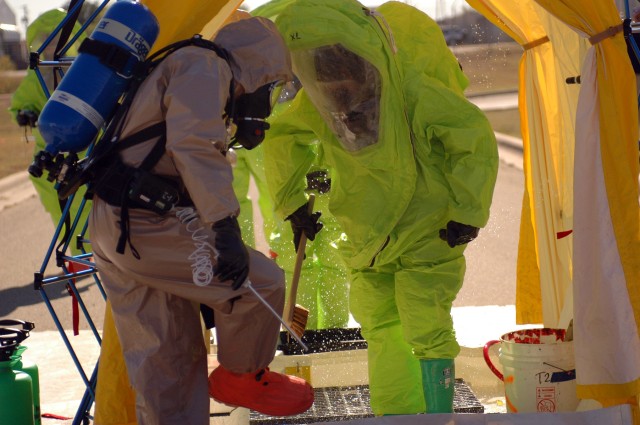

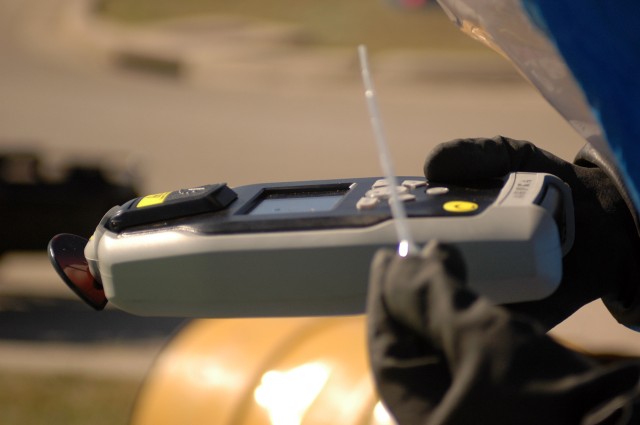

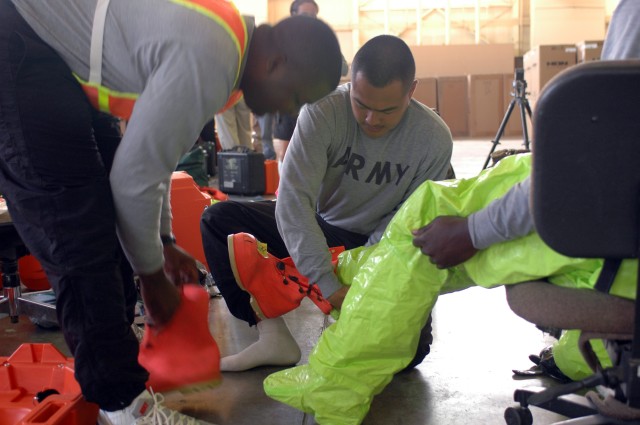
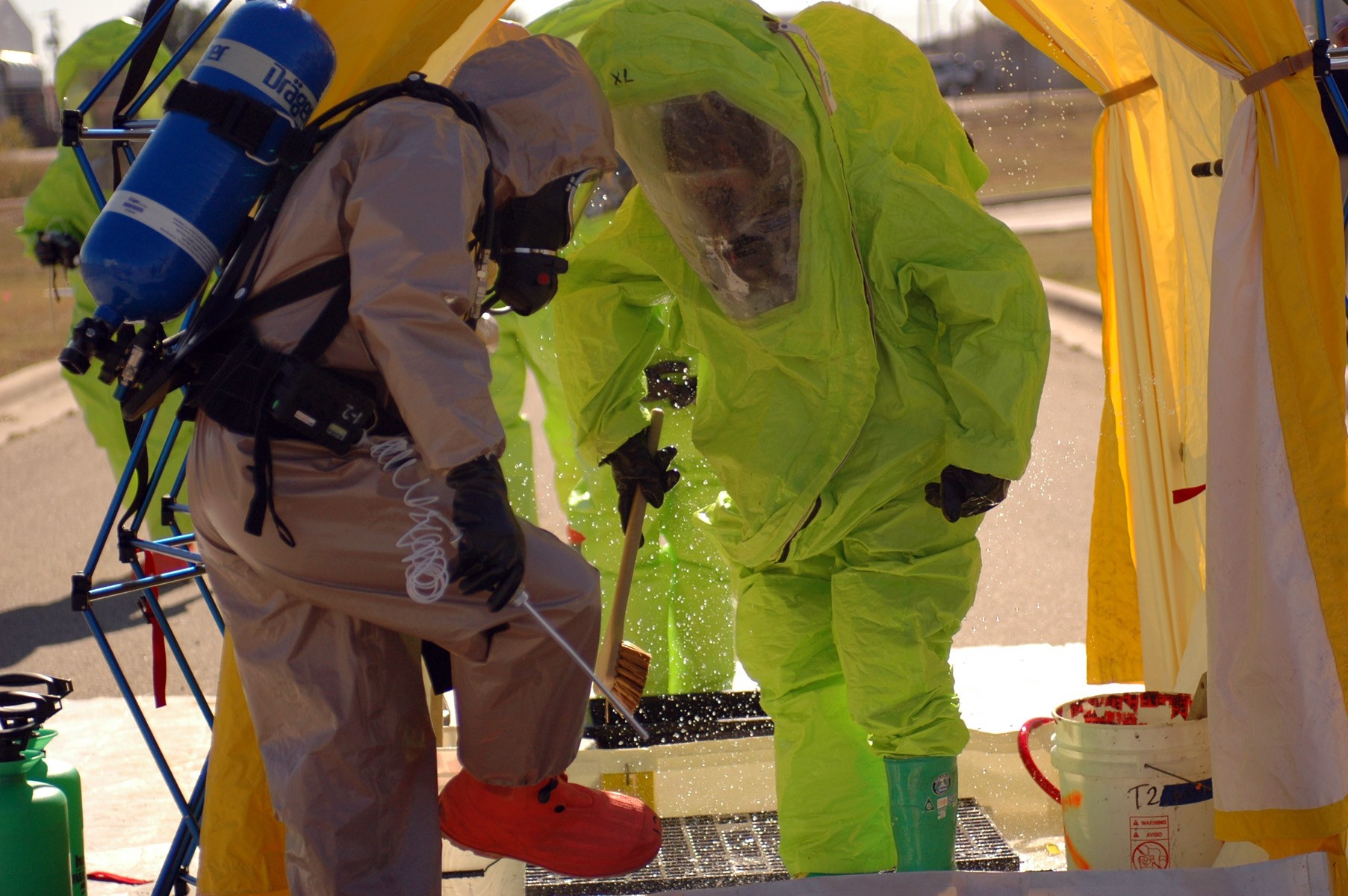
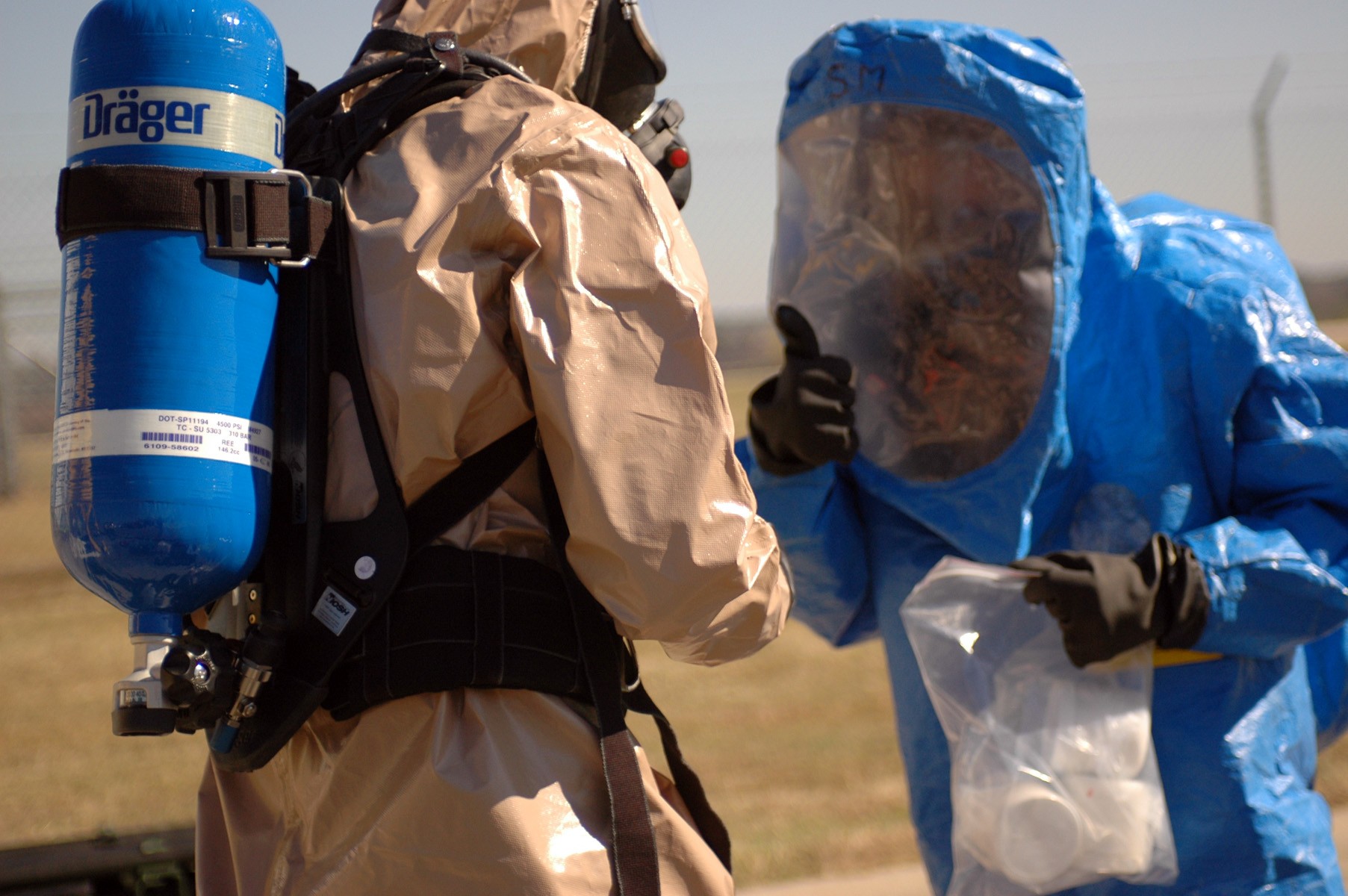
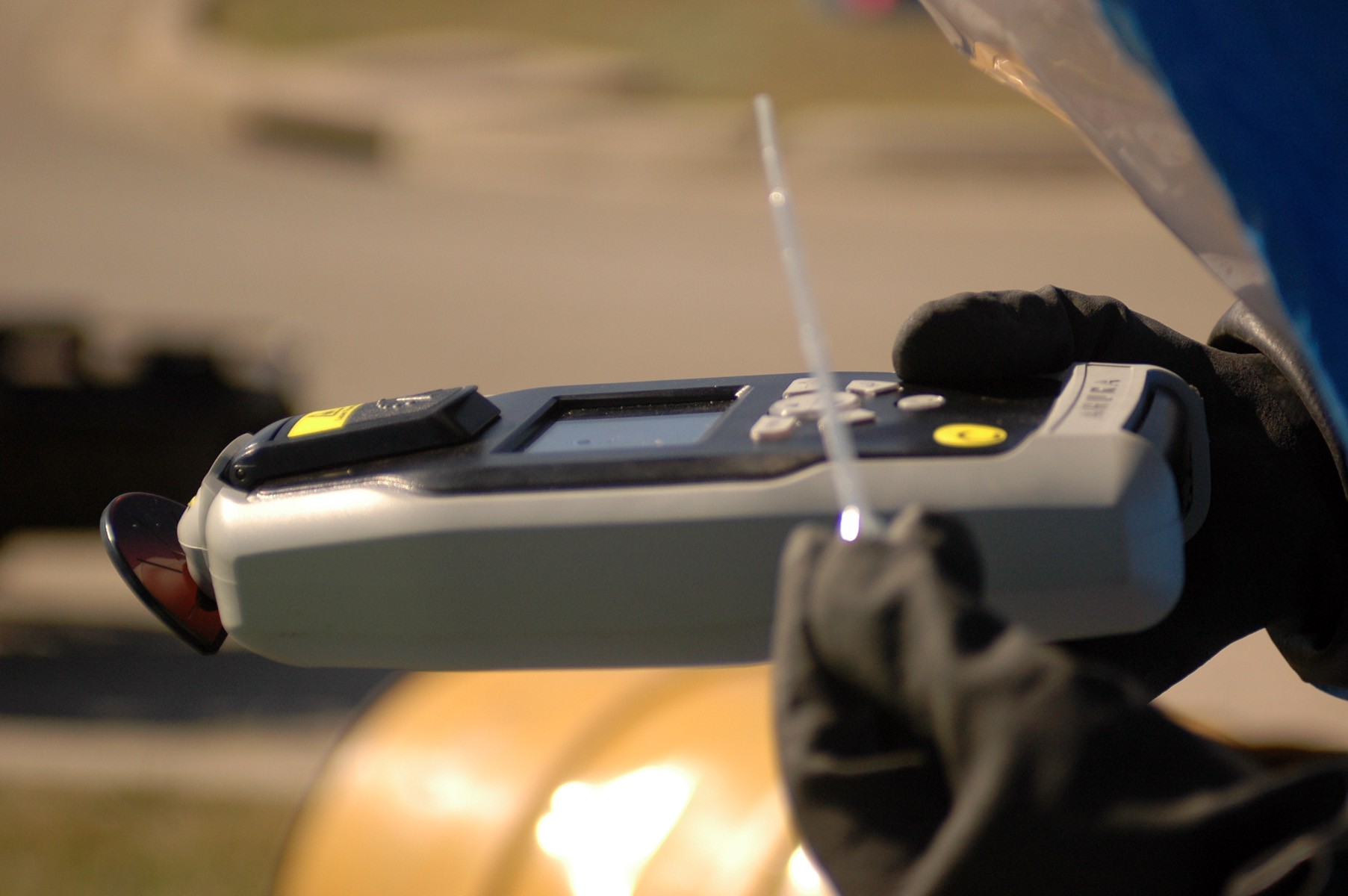

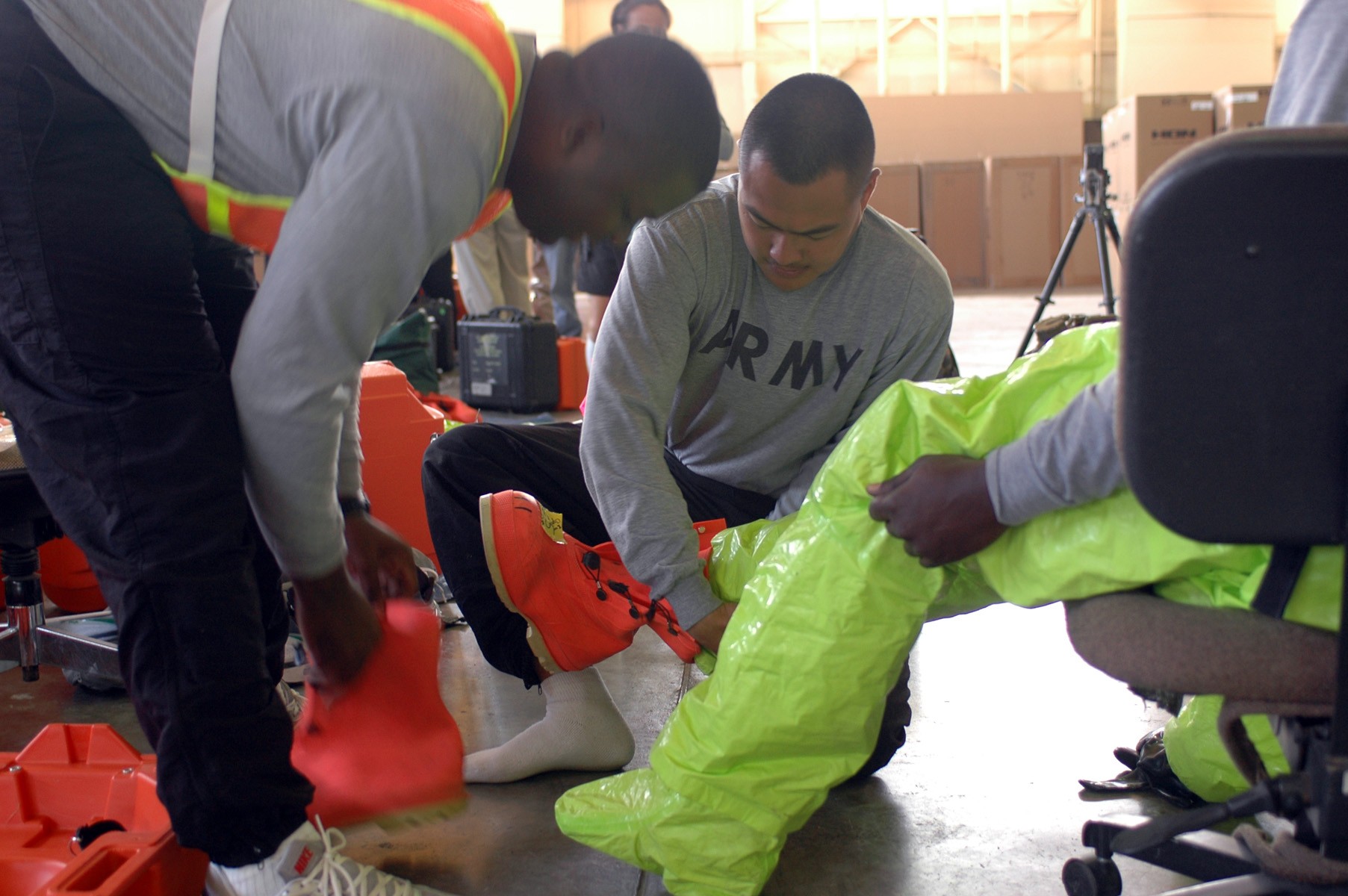
Social Sharing